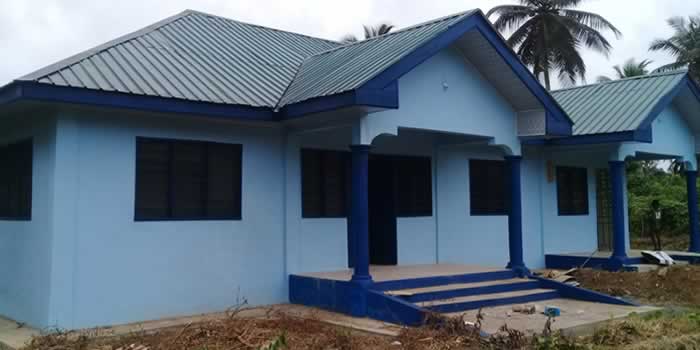

Landscape and Types of Rocks
The south-central part of the District is an area of rolling granite topography consisting of frequent steep-sided small round hills rising from 200 to 600m. Around the coastal area, the relief is lower consisting of flat upland areas and steep valleys. However, there are a few highlands formed by a ridge of highlands running northwest to southeast from Tano to Bonyere terminating on its northern side in the Nawulley scarp.
Geology and Mineral Resources
The Municipal lies within five main geological formations namely, the Lower Birimian, the Upper Birimian, the Granites Tertiary Sands and the Coastal Sands. The Lower Birimian consists mostly of phillites with injected quartz veins, while the Upper Birimian consists mostly of volcanic rocks and relatively minor amounts of phillites. The granite was formed into the older Birimian formations. The Lower and Upper Birimian and the granites are all Pre-Cambrian and were formed very early in the geological time scale. The tertiary deposits of the southwest of the district are very much younger and represent a relatively recent addition to the Ancient African massif of which other formations form part. These deposits form a mantle of uniform sandy clays overlying a number of different geological formations below. The coastal sands consist of very young sand and alluvial deposits along and behind the shoreline of the district.
The district’s mineral and natural resource endowments are diverse, among which experts have identified vast deposits of limestone in Nawulley; huge deposits of Kaolin are found in places such as Bawia, Nvellenu and Tikobo No. 2. There are deposits of Silica in Half Assini, the Capital and Newtown, alluvial gold in the Tano Basin, while recently, and perhaps of far greater economic significance, is the discovery and development of oil and gas within the Tano Basin off the coast of Jomoro.
Vegetation
The Municipality lies within the forest belt of Ghana. The original vegetation in the interior parts of the District was the Tropical Rain Forest type characterized by its evergreen scenery with a vast variety of plant species (Jomoro Municipal MTDP, 2010). The present vegetation is made up of a forest reserve at Ankasa, which is characterized by l high forest. There are designated areas of fallow land and tree crops, and farms/plantations (Damnyag et. al, 2013). There are also major areas of swampy forest, which have not seen much cultivation because of their waterlogged nature for most times of the year.
Climate-rainfall pattern, dry conditions
A high rainfall, falling in two wet seasons and a uniformly high temperature characterizes the climate of the District. The climate is classified as Equatorial Monsoon and owes its rains to low pressure areas over the Sahara attracting winds from the South of the Equator (Jomoro Municipal MTDP, 2010).
The climate is favourable for plant growth and is considered as greatest asset of the District. The harmattan air mass that brings dry conditions comes under the effects of the Monsoon and the Equatorial mass. The result is a variable weather, which includes moderate to very heavy rains (Jomoro Municipal MTDP, 2010).
Although gaps in climatic records on the district make them unreliable for planning purposes, the district is believed to be the wettest part of the country (Jomoro Municipal MTDP, 2010). Temperature in the district is generally very high with a monthly mean of 26° C. Relative humidity throughout the district is also very high about 90 percent during the night and falling to about 75 percent when temperature rises in the afternoon.
Conditions of the natural environment
The district has extensive rainforest, which has given rise to timber extraction. Lumbering activities can be found around Mpataba, Nuba, Ankasa, Tikobo No.1, Ellenda and Anwiafutu area. The activities of timber extractors in the district have had negative effects by way of depleting economic trees as a result of the neglect of afforestation and re-afforestation programmes and the destruction of young trees, all leading to micro climatic change and ecological imbalance.
Some portions of the forests are also earmarked for crop farming. Major crops grown are cassava, coconut, maize, cocoa, and plantain. The use of traditional farming methods, which is predominantly by slash and burn and the extraction of wood fuel are gradually having a deleterious effect on the natural environment by degradation whilst contributing to global warming (Jomoro Municipal MTDP, 2010).
Date Created : 11/20/2017 4:47:04 AM









 facebook
facebook
 twitter
twitter
 Youtube
Youtube
 +233 593 831 280
+233 593 831 280 0800 430 430
0800 430 430 GPS: GE-231-4383
GPS: GE-231-4383 info@ghanadistricts.com
info@ghanadistricts.com Box GP1044, Accra, Ghana
Box GP1044, Accra, Ghana